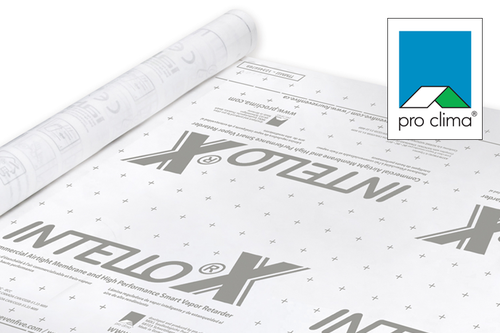The STREAM Wall - Part 2 of 3
Structure
There are many options for the structure of the wall. We’ve pretty much tried them all, including 2x4, 2x6, double 2x4 on a shared/split plate, SIPs, ICF above grade, Superior Wall above grade, vertical I-Joists, etc. We’ve studied the costs of different wall assemblies and it amazes me how similar these are if you evaluate a wall based on thermal performance alone.
Above is our first collaboration with Bensonwood where we used their vertical I-Joist studs pre-fabricated into wall panels that are assembled on site. In our opinion this is one of the best systems available for projects of a scale large enough to warrant a fully panelized approach.
For example, an R-30 wall costs about the same no matter what type of assembly you use. There is a really good reason for this: the companies that make the products that we use have analyzed all the possible wall assemblies much more than any individual designer has because they need to understand their market and where they fit in. There is a very high probability that there is a system out there that costs less to produce than other systems but the market demand will mean the cost to the consumer will be essentially the same. It just means one company will be more successful than the others but it doesn’t translate into any real savings for the end-user. I think we waste a lot of time fiddling with our wall assembly in an effort to find a theoretical most cost-effective solution.
What it boils down to is coming up with a standard wall that is easy for the builder to understand, one that uses materials and techniques that they’re familiar with. For this reason, I tend to prefer traditional building practices over more advanced solutions like SIPs or I-Joists that require a factory. A conventional dimensional lumber structure has the benefit of being built on-site OR in a factory without any special knowledge. It works equally well for new construction as it does for additions or renovations. So with that settled, what size lumber should we use?
It may come as a surprise but a 2x8 may be the best option if you want to keep things super simple. It may seem crazy because you can probably get away with a 2x4 in most cases in terms of structural requirements but the structure is only one part of the equation. After WWII, homes were largely built with 2x4 and it wasn’t until the 1970’s energy crisis that homes began using 2x6 in order to get more insulation into the walls. It was never really about having more structural capacity back then just as it isn’t about structure now. The 2x8 strikes exactly the right balance between too little or too much thickness of cellulose insulation in the cavity and it can be framed on the deck and tilted up in one operation just like a 2x4 wall. 2x8 studs also allow you to substitute blanket (aka batt) insulation in the cavity which can be installed easily by DIYers. Plus, the 2x8 depth actually has a pretty good amount of thermal resistance on its own so the requirement for the continuous insulation as a thermal break is somewhat less of a concern in projects that just can’t afford that extra step.
With 2x8 studs we are talking about a pretty beefy wall in terms of structure so I would look for ways to reduce the number of studs as much as possible. You might think that means we would space the studs 24” o.c. but the problem is it won’t coordinate well with the siding or interior finishes. Instead, I prefer to space studs at 16”o.c. but use some of the advanced framing techniques like aligning rafters with wall studs to eliminate the double top plate. I would also eliminate headers as much as possible by relying on the rim joists (or double the rim) and use hangers for headers to avoid the common tripling of studs on both sides of every opening.
We can also potentially skip the sheathing altogether to avoid unnecessary layering of materials and it helps keep our full wall assembly more vapor open. Per the Residential Building Code we can use a 1x4 to create the braced panels needed to resist shear forces. A single sheet of Zip sheathing costs about $25 but a similar structural effect can be achieved with a single 1x4 for only about $7. In other words, most builders are typically over building our structures and under building the air and vapor barriers. With a smart, weather-resistive barrier we can still achieve an airtight system, even without sheathing. I’m not saying it is less expensive just that we can be smart about how we create a higher-performance building for about the same cost.
Foundation
The plant-based wall assembly breaks down when you get below grade (literally and figuratively). We need to use something other than wood when our wall meets the earth, so concrete becomes the logical and most common choice. A stone foundation is another option, but one rarely used anymore.
What’s critical to keep in mind is the relationship between the wall and the foundation, and which elements align to each other. The rainscreen in particular, in order to do its job, must drain water to the exterior and also be able to freely draw in air from top and bottom. This requirement dictates that it be comfortably past the outside finished surface of the foundation.
But: not too much. It looks right for the walls of the house to extend over the foundation a bit, but not so much that it starts to look like a separate element, as if the house were just placed on a concrete pedestal but not attached. By aligning the inside plane of the rain screen with the outside surface of the foundation, not only are the functional requirements met, but so are the architectural ones.
Here is an illustration of high performance wall in action showing the traditional relationship of the exterior finishes to the concrete foundation. In the third and final installment I’ll explain exactly what’s going on with the rest of the components shown here.





